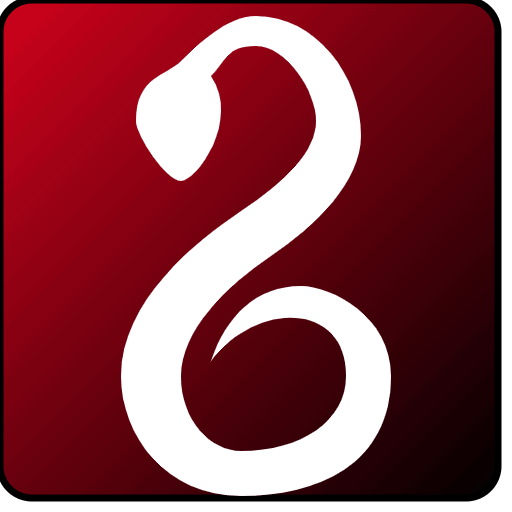Last Updated on January 22, 2023
The party is in the middle of combat in an ancient forest of the feywild. A hardy dwarf fighter swings his flame tongue greatsword at a menacing treant and deals 30 damage to it with one blow, 28 damage with the second.
He uses his action surge to make another attack action and deals 29, and then gets a critical hit dealing a massive 52 points of damage, and fells the awakened tree in a single turn of combat
Sounds pretty insane right?
Well, a large part of that is due to the fighter being able to let off an insane amount of attacks in one turn, but the other has to do with choosing the right weapon for the battle.
You see, the dwarf’s greatsword would normally only deal 2d6 slashing damage. Since he’s using an enchanted flame tongue sword though, it deals an additional 2d6 fire damage.
Since treants are vulnerable to fire damage, that damage is doubled, allowing this dwarf, which could be only fifth level, to defeat a 9 CR monster in one turn of combat.
Okay, stop! That sounds insane right?
There is a lot of information I threw at you right there. Breathe for a second. It’s okay if you’re confused. Frankly, if I hadn’t written all of that, I would be too.
Damage types can be one of the hardest things to understand in D&D fifth edition.
My goal here today is that when you’ve read through this article you can not only go back and understand that introduction but apply it to your games to become the best player you can be.
So let’s get into it.
Beginner’s Guide to Damage Types in 5e
What are Damage Types?
Damage types are a mechanic that we use to describe what kind of damage is dealt. We use them to differentiate between things like swinging a sword at someone and lighting them on fire with a spell.
There are 13 different damage types in 5e, and I’ll give a brief explanation for each of them.

Bludgeoning: Blunt damage. Hammers, clubs, anything that’s just a solid object hitting a creature will deal this type of damage.

Piercing: I call this stabbing damage. It’s what happens when you use a pointy object. An arrow, a spear, or maybe even thorns on a vine would likely deal this kind of damage.

Slashing: If piercing is stabbing, slashing can be simplified to cutting. You’re going to deal this type of damage with most swords and axes; basically, any edge blade or item that works like an edged blade.

Acid: This one used to confuse me because growing up with PokémonTM, the move acid was poison type. Let me assure you, the two are different. Acid is any corrosive substance that melts away at things. A gelatinous cube deals acid damage as it tries to completely dissolve its victims. I always remember stomach acid for this.

Poison: Poison, on the other hand, is made of harmful toxins. A venomous snake or a poisoned dagger would deal this damage.

Fire: F is for fire burns down the whole town. U is for uranium… bombs. Fire damage burns, pretty simple. It should be clarified that fire damage doesn’t necessarily set things on fire, that has to be specified in the attack description (or ruled by the DM).

Cold: Cold damage is dealt by something that freezes so much it hurts. It’s like frostbite, but really, really fast. Cone of cold, ice knife, frostbite (of course there’s a spell named frostbite), and many more spells deal this.

Force: Force damage is described as “pure magical energy focused into a damaging form,” PHB pg 196. It’s basically just raw magic, devoid of any sort of elemental connection.

Lightning: Another pretty simple one, this is electric damage. If you hit a creature with a strike of lightning or the D&D equivalent of a taser you’re going to be dealing lightning damage. Which is not to be confused with our next type.

Thunder: Thunder damage can feel like a bit of a misnomer, and I find it helpful to think of this as sonic damage. This is damage dealt by powerful sounds. It’s like being hit with a concussion grenade or having a gunshot go off next to your ear. In-game, this happens when you cast spells like thunderwave or thunderclap. Admittedly, this is a rather rare type of damage.

Necrotic: Well necrotic has its roots in death magic, or necromancy, and as such, is a type of damage focused in death, or rather, anti-life. It’s typically used by undead creatures, although there are numerous spells that deal necrotic damage, such as the ever confusing, chill touch (which does not deal cold damage).

Psychic: Damage of this type deals with matters of the mind. A mind flayer who attempts to extract your brain will deal psychic damage, but so can a particularly cruel insult with the spell Vicious Mockery. This is the kind of damage you might experience when someone tells you a really bad dad joke (check out Dungeons and Daddies for more on that).

Radiant: Radiant damage is probably best known for its use in a paladin’s divine smite. It’s pure energy of light so powerful that it sears whatever it’s attacking. Calling it holy damage alone does no justice for just how powerful this is.
How Do Damage Types Work?
You got a taste of it in the introduction, but damage types determine how much damage is dealt to specific creatures. These determinations are decided by vulnerability, resistance, and immunity.
They do not have any extra effects, such as poisoning, burning, or freezing. Often spells or weapons that deal a specific damage type will inflict a condition as well. However, it is very important to remember that those are extenuating circumstances.
Hitting a creature with fire damage does not automatically mean they catch on fire, hitting a creature with poison damage does not automatically mean they are poisoned, so on and so forth.
It’s important to understand the four relationships a creature can have with a certain damage type, so let’s discuss them.
Vulnerable – If a creature has a vulnerability to a damage type, they are weak to it. Damage of that type is doubled. The treant in the example above was vulnerable to fire damage, so I doubled the 2d6 of fire damage from the magical sword.
Resistant – A creature that is resistant to a damage type will only take half of the damage. This is the most common modifier you will see. Many playable races or classes gain certain abilities, and it is a huge lifesaver. Barbarians for example, have resistance to bludgeoning, piercing, and slashing damage while in a rage.
Immune – Creatures that are immune to a damage type take no damage of that type. This is exceedingly rare, but certain creatures just take no damage of a certain type.
No modifier – The hidden fourth relationship that creatures can have to a damage type. The default is that creatures take the damage as written. If a creature has no immunities, resistances, or vulnerabilities to fire damage, they’re taking the amount that shows up on your dice.
Resistance and vulnerability are applied after any modifiers. You roll your damage, add in any bonuses you might have lying around, and then half or double your damage.
Typically, you’ll just be telling the DM your damage, and they’ll worry about any instances of resistance or vulnerability that might come into play.
An In-Depth Look at Damage Types 5e
Hopefully, you have everything you came here for. A basic understanding of damage types is so important to not being constantly confused while playing D&D. Every attack has a damage type, and it’s important that we know what’s going on.
If you’re interested in learning more, keep reading.
Since you now understand the basics of damage types, let me throw a few curveballs your way, since they’re bound to happen. There are plenty of situations that can come up at the table.
While I can’t prepare you for all of them, I want to eliminate as much confusion as possible while I have you here.
Multiple Damage Types
The example in the introduction used a flame tongue greatsword. Flame tongue is a type of magical sword that deals an extra 2d6 fire damage while it’s activated. That damage goes on top of whatever damage already exists.
I chose a greatsword not just because they’re cool, but because they also deal 2d6 damage. The damage dealt by a greatsword is slashing damage, since you slash at people with it.
So what happens when we use this weapon? Well normally, we would roll 4d6 and deal that damage to the creature. In the example though, we’re dealing with a treant, which is vulnerable to fire damage.
When that damage is being calculated we won’t just double all four d6 that we roll, we’ll double the two that are assigned to the fire damage. It’s a good idea to roll separate dice whenever we use weapons with multiple damage types because we as the players won’t always know what relationship a creature has to them.
We roll 2d6 for the greatsword, a 5 and a 4, for 9 slashing damage. Then we roll a 4 and a 6, for a total of 10 fire damage. We might be in for a pleasant surprise when our DM tells us that the attack deals 29 damage rather than just 19, since the 10 fire damage was doubled.
It’s very important to distinguish damage types, and not jump to assumptions, since we rarely know what’s going on behind the DM screen.
Let’s say our flame tongue had been a rapier. Rapiers deal 1d8 piercing damage, so it’s a bit easier to keep those rolls separated. We also would have had a much different result, since treants are resistant to piercing damage. Some of our damage would’ve been halved, some of it would’ve been doubled.
Rolling multiple damage types at the same time can be tricky at first, but if we just keep it separate we make everyone’s lives a whole lot easier.
I highly suggest getting different colored dice if you become attached to a weapon that is going to put you in these situations frequently.
Magical Damage
You might’ve seen something like “resistance to nonmagical piercing, bludgeoning, and slashing attacks.” While “magical” isn’t a damage type per se, it is a characteristic that damage can have.
This distinction can stump even the most veteran players at times. To break it down very simply, damage from a magical source is magical damage and damage from a mundane source is nonmagical damage.
If you swing a basic run-of-the-mill greatsword at someone, you’ll deal 2d6 slashing damage. But not all weapons are created equally. An enchanted sword, or a sword affected by the magical weapon spell, would be a magical weapon, and therefore would deal magical slashing damage.
While the term magical only modifies a damage type based on its source, a creature can have resistances, immunities, or vulnerabilities to magical damage. Sometimes that means magical damage of any type, and sometimes that includes a list of damage types.
Ghosts in 5e are resistant to “Acid, Fire, Lightning, Thunder; Bludgeoning, Piercing, and Slashing From Nonmagical Attacks.” That’s the direct quote from its damage resistance in the stat block, and you’ll notice a semicolon there between thunder and bludgeoning.
In addition to a few powerful resistances, a ghost is also resistant to nonmagical attacks that deal bludgeoning, piercing, or poison damage.
Martial combatants would do well to have a magical weapon on deck, or a spellcaster in their party ready to make their weapon magical through some sorcery.
The Best Damage Types
Everybody wants to know what the best damage types to wield are, and what the best resistances to have are. The short answer is that it doesn’t matter. Seriously, you could gain a resistance to the most common form of damage and your DM could just completely avoid choosing that.
On the other hand, your DM could throw you a bone and only hit you with fire damage if they know you have resistance. The power is often in the hands of the person running the game.
Still, the questions remain, and there are less pessimistic answers that I have for you. Below is a table listing the number of resistances, immunities, and vulnerabilities that creatures in the Monster Manual have.
| Damage Type | Resistance | Immunity | Vulnerability |
| Acid | 18 | 15 | 0 |
| Cold | 46 | 20 | 4 |
| Fire | 37 | 40 | 9 |
| Force | 0 | 1 | 0 |
| Lightning | 35 | 10 | 0 |
| Necrotic | 11 | 11 | 0 |
| Poison | 5 | 90 | 0 |
| Psychic | 1 | 10 | 1 |
| Radiant | 4 | 0 | 2 |
| Thunder | 14 | 2 | 1 |
| Bludgeoning | 8 | 0 | 4 |
| Slashing | 6 | 2 | 0 |
| Piercing | 10 | 0 | 0 |
While this table doesn’t account for the many new monsters that have been introduced to 5e since the publishing of the Monster Manual in 2014, it gives some insight into how effective the different damage types are.
Keep in mind that the MM contains over 350 different creatures in it, and at least another 700 have been introduced to 5e at the time of publishing, so these percentages could be way off.
What we see is that poison, fire, and cold are the damage types you are least likely to deal full damage with, in that order. You’re also most likely to deal your expected damage or better with force, radiant, and bludgeoning, in that order.
It’s much harder to quantify damage types that are dealt by creatures. You have to take all spells into consideration, along with the fact that most creatures don’t deal only one type of damage.
Pick up as many resistances as you can for your character. Fire does tend to be the most common, but again, it all depends on the campaign and your DM. If you’re dealing with an underwater campaign or adventure, it might not come up much.
I’m a huge advocate for talking to your DM when building your character. Damage types are a great thing to discuss at a session zero. It probably doesn’t make sense to choose a race-based solely on its resistances, but your DM might tell you that he has a lot of poison damage planned for this campaign, and your dwarf fighter will start looking really good.
Cue “The More You Know” gif. Hopefully, you have everything you need to not take extra psychic damage at the table the next time someone starts talking about resistances.
Understanding these concepts can help you build a powerful character and have some much-needed peace of mind while playing this wonderful game.
I encourage you to go back to the introduction and see how much sense it makes to you now. Do keep in mind that fighters get to make a lot of attacks because that’s a whole different bag of worms.
Best of luck to you, and as always, happy adventuring!
As a kid, I was often told to get my head out of the clouds and to stop living in a fantasy world. That never really jived with me, so I decided to make a living out of games, stories, and all sorts of fantastical works. Now, as an adult, I aspire to remind people that sometimes a little bit of fantasy is all you need when life gets to be too much.

You’re missing “Blueberry damage” and “Custard damage”.
Custard damage being from Wild Beyond the Witchlight
Blueberry damage coming from Sheldong the Blueberry Dragon (official creature)